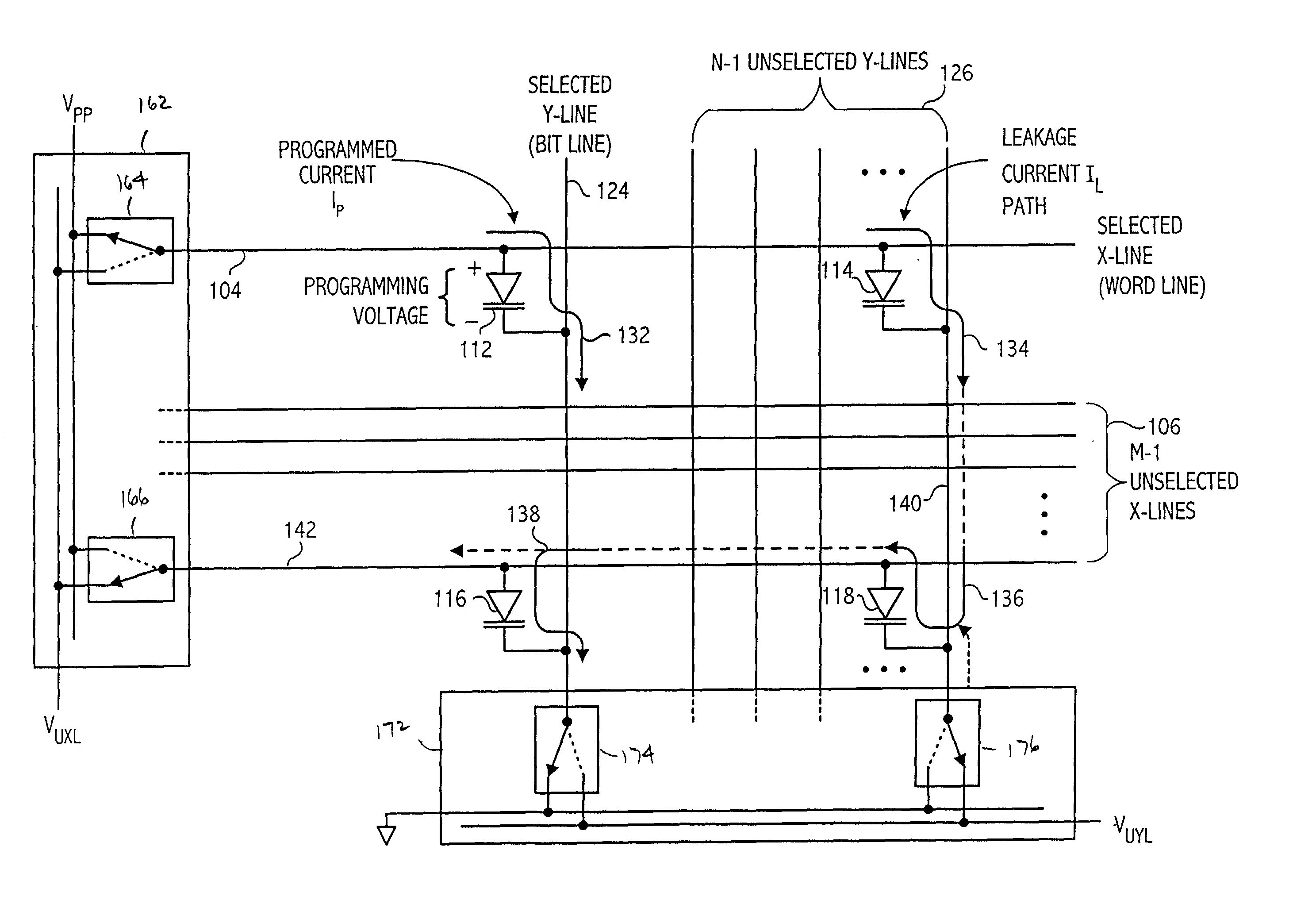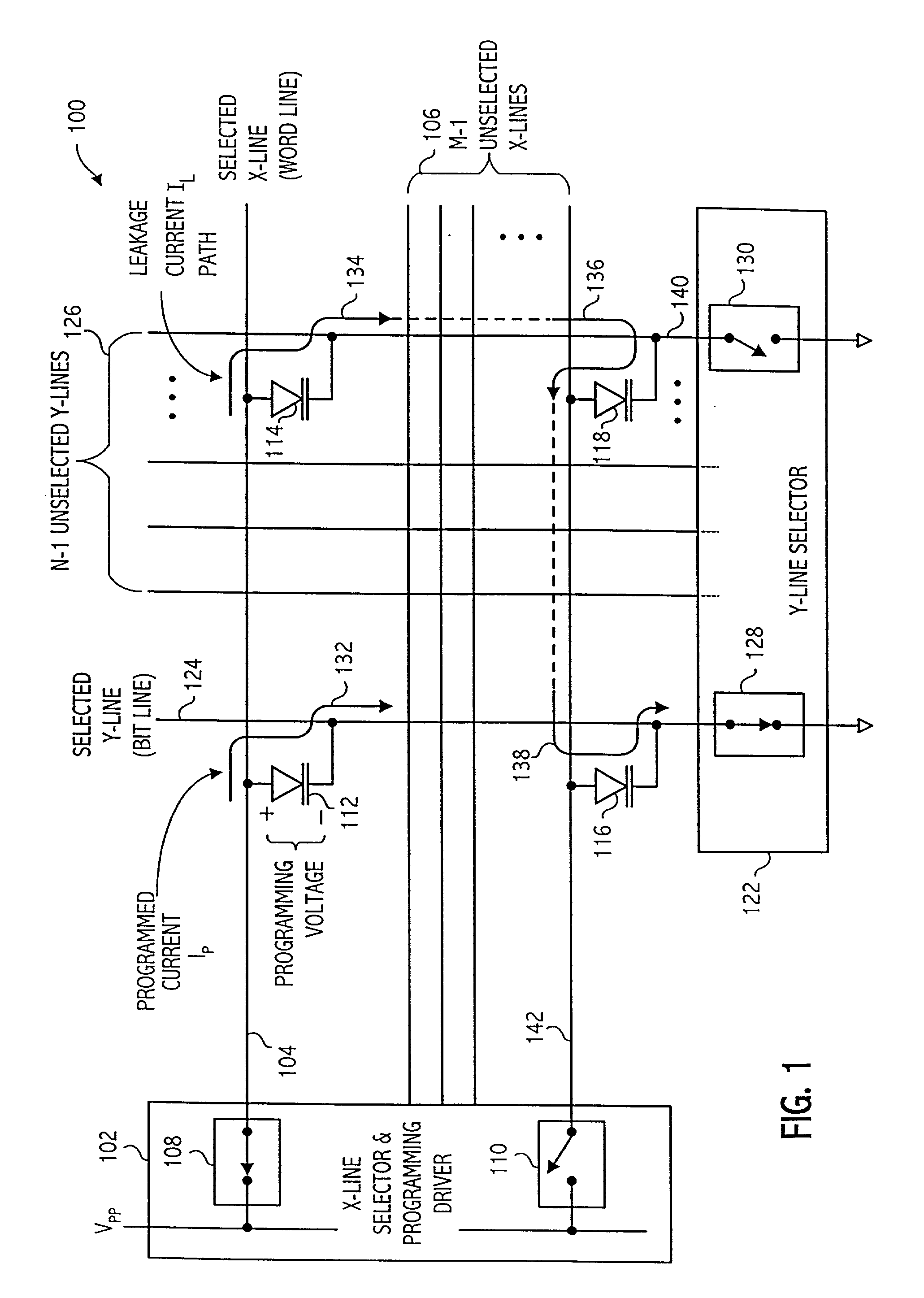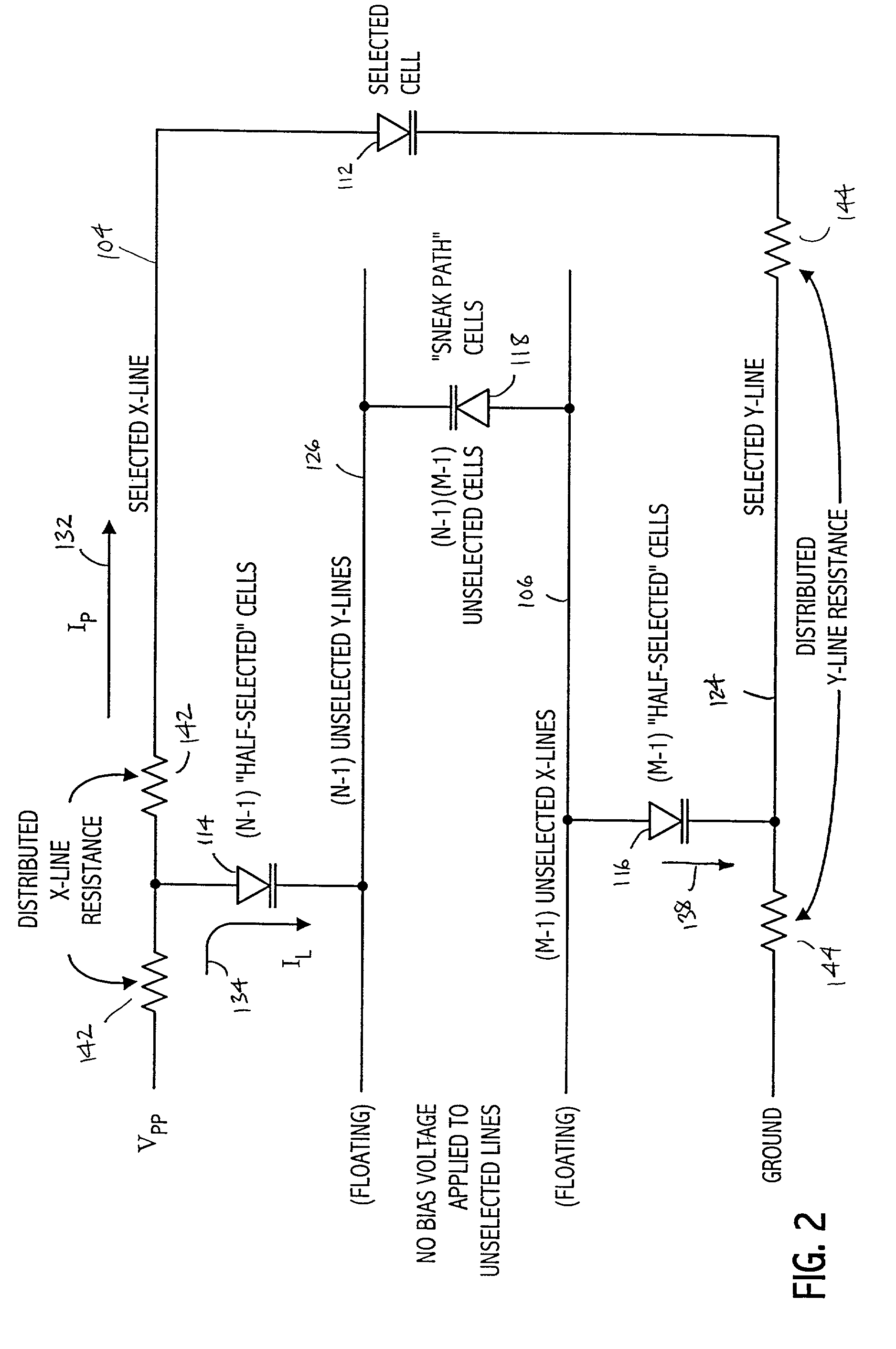Method and apparatus for biasing selected and unselected array lines when writing a memory array
a memory array and array line technology, applied in the field of semiconductor memory arrays, can solve the problems of cmos latchup event, large chip area required by such on-chip circuitry to generate programming voltage sources with sufficient current capability to support unselected memory cells,
- Summary
- Abstract
- Description
- Claims
- Application Information
AI Technical Summary
Benefits of technology
Problems solved by technology
Method used
Image
Examples
Embodiment Construction
)
[0033] For passive element memory arrays, a high voltage V.sub.PP (also variously known as and described herein as V.sub.P or as V.sub.PROG) is applied across a memory cell within the memory array to program the conductivity of the memory cell. In a write mode of operation, for example, one word line may be raised to a positive voltage and one bit line may be held at ground. It is necessary to apply the V.sub.PP to just a selected memory cell, but not to other memory cells that are also connected to the selected word line and bit line.
[0034] Referring now to FIG. 1, a memory array 100 is shown which utilizes passive element memory cells. Each passive element memory cell is generally a two-terminal memory cell having a steering element in series with a state change element, together connected between one of M possible X-lines (i.e., word lines) and one of N possible Y-lines (i.e., bit lines). These two elements within a memory cell may both be present before programming. Alternative...
PUM
 Login to View More
Login to View More Abstract
Description
Claims
Application Information
 Login to View More
Login to View More - R&D
- Intellectual Property
- Life Sciences
- Materials
- Tech Scout
- Unparalleled Data Quality
- Higher Quality Content
- 60% Fewer Hallucinations
Browse by: Latest US Patents, China's latest patents, Technical Efficacy Thesaurus, Application Domain, Technology Topic, Popular Technical Reports.
© 2025 PatSnap. All rights reserved.Legal|Privacy policy|Modern Slavery Act Transparency Statement|Sitemap|About US| Contact US: help@patsnap.com



